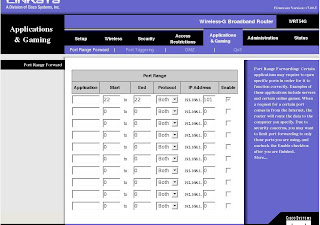Mathematically, for call option (european in particular), delta is defined as:

where c is the call option price, and S is the current stock price, N(d1) is the cdf of standard normal distribution defined within 0 and 1. The figure below will explain the delta concept.

The figure shows the call price with respect to the corresponding stock price. As we can see, the red line shows the slope of the curve at one particular stock price. This the delta of the call price at that particular stock price. Above that point, the call price increases at a greater rate than the stock price, and below that point the call price decreases at a slower rate. This is defined by the gamma parameter of the option, i.e. the rate of change of delta.
Now, here comes the interesting part, looking at the curve, one might wonder if there is an exploit such that under volatile market, profit could be earned irrespective of the direction of stock price with no initial investment at all (free lunch and/or arbitrage). Well, there is actually, I believe this is the so-called volatility arbitrage. This is done, again, by setting a portfolio consisting of long call and short delta number of stock price, as explained in the beginning.
Now, let's do some matlab simulations. The code for the simulation is given below:
function value = voltrade(S0,X,r,mu,t,sig,steps,NoPaths)Note, the above function will call some external functions that are not defined here. Anyway, the objective of the function is to generate Monte Carlo simulation of stock prices, and at each time step to find the corresponding call option price, and also then to find the return of portfolio based on longing one call option and shorting delta number of stock. The function parameters are : S0 (current stock price), X (call option exercise price), r (risk free rate), mu (expected stock return), t (time to maturity), sig (volatility of stock), steps (number of delta t), and NoPaths (number of paths for Monte Carlo simulation).
dt = t/steps;
drift = (mu - 0.5 * sig ^ 2) * dt;
vol = sig * sqrt(dt);
[price, delta, gamma] = tri_Eprice(S0, X, r, t, steps, sig, 0, 1);
Z = [zeros(NoPaths, 1) normrnd(drift, vol, NoPaths, steps)];
Z = (cumsum (Z'))';
S = S0*exp(Z);
ttm= [ones(NoPaths, steps) * dt];
ttm = cumsum (ttm')';
flipttm = [fliplr(ttm) (zeros(NoPaths, 1)+0.0000001)];
ttm = [(zeros(NoPaths, 1)+0.0000001) ttm];
callprice = blackscholes(S, X, r, flipttm, sig, 0) .* exp(-r.*ttm);
Sp = S .* exp(-r.*ttm);
value = mean(callprice - callprice(1,1) + (S0 - Sp) * delta);
subplot (2,1,1);
plot (value);
xlabel ('time step');
ylabel ('portfolio return');
subplot (2,1,2);
plot (mean(S));
xlabel ('time step');
ylabel ('stock price');
Anyway, let's just run the function, first let's see what happen when the expected stock return, mu, is set to 30 % (which is set to be large enough to provide a greater certainty of large positive return, as the simulation doesn't really involve change in volatility parameter in order to explain the concept)
voltrade (50,50,0.05,0.3,0.5,0.4,1000,1000);The return of the portfolio would look as below:

As you can see, the portfolio, will generate an "expected" positive return of approx. $ 0.8 after 6 months with zero initial investment. It is "expected" because, well, it's only a simulation based on Monte Carlo, which is then based on random numbers generated from certain distribution (lognormal) that is assumed to mimic certain parameters of stock price (there are a lot of assumptions here, this is finance, talking mostly about uncertainty).
Ok, now, let's see what happen if the stock generate an expected negative return (setting mu to -30%):
voltrade (50,50,0.05,-0.3,0.5,0.4,1000,1000);The result:

As we can readily see, the expected portfolio return is positive even when the stock price declines within the period to maturity. Again, this is done with no initial investment at all (well, except the transaction costs).
Now, what if we set the expected stock return to 0:
voltrade (50,50,0.05,0.0,0.5,0.4,1000,1000);

Well, can't really see anything here but as the expected stock return follows a generalized Wiener process, there is always a probability of large change in price even though mu is set to zero. We could rerun the simulation over and over again and once in a while (lots of while, depends on volatility) the stock will change drastically, either up or down, and the option price will increase correspondingly (in real life, this is the right time to close the portfolio). This is more easily said than done in real life though (can't redo). Note, the simulation above doesn't really involve changes in volatility parameter. Hence, by incorporating an increase in volatility in between the time steps to maturity, the option price will generally increase, even though we set mu to zero. Hence, this strategy will perform well when the current implied volatility is low, and the investor expects that the volatility will increase considerably in the near future. The consideration for sensitivity of the option price with respect to volatility is set by the option greek parameter vega.
Update:
The above explanation and implementation are flawed, refer to here.





